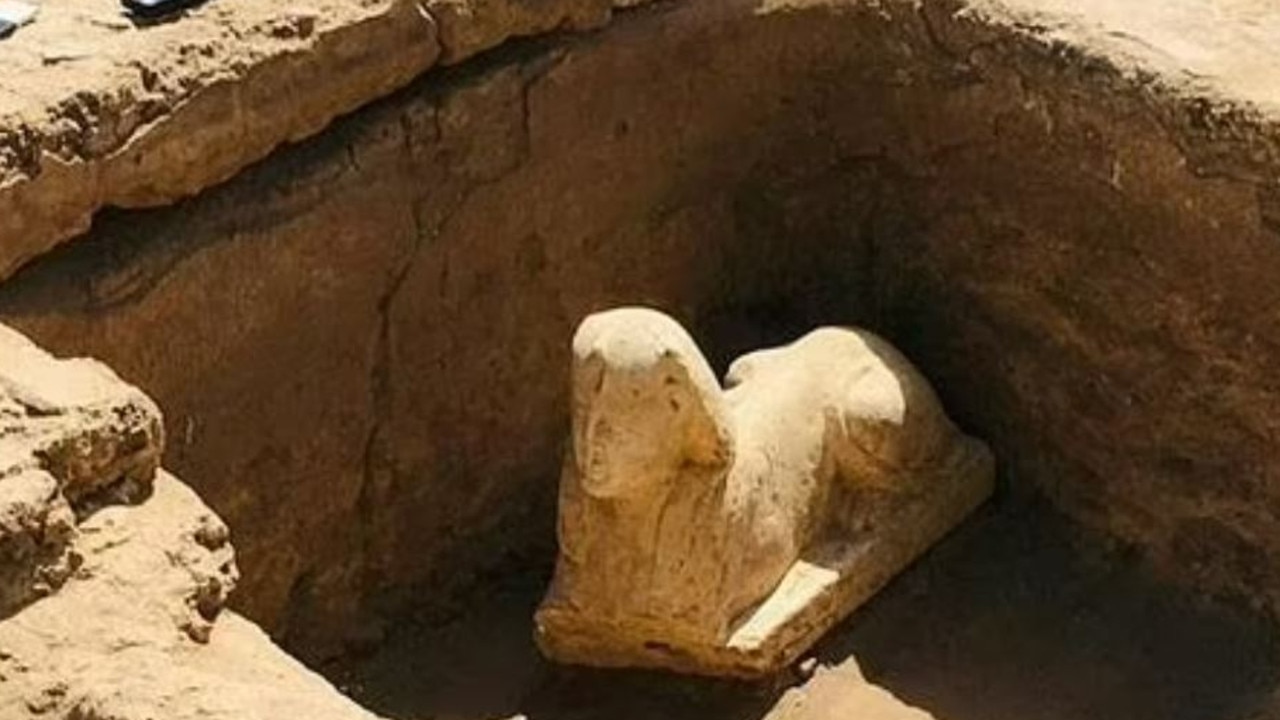Sphinx with a ‘smiley face and two dimples’ is unearthed in Egypt
Experts believe newly unearthed sphinx statue may have been a representation of a Roman emperor

READING LEVEL: ORANGE
Archaeologists in Egypt have unearthed* a sphinx* statue “with a smiley face and two dimples” near the Hathor Temple, one of the country’s best preserved ancient sites, the tourism and antiquities* ministry.
It is the latest in a series of discoveries revealed over the past few months.
The limestone artefact*, believed to be a stylised* representation of an ancient Roman emperor, was found inside a two-level tomb near the temple in southern Egypt, the ministry said in a statement.
Next to the “beautifully and accurately carved” sphinx, researchers had found “a Roman stele* written in demotic* and hieroglyphic*” scripts, the ministry’s statement said.

Once fully deciphered, the stele may shed light on the identity of the sculpted ruler, who the Egyptian research team said could be Emperor Claudius.
Hathor Temple, about 500 kilometres south of the capital Cairo, was home to the Dendera Zodiac, a celestial* map which has been displayed at the Louvre* in Paris since 1922, more than a century after Frenchman Sebastien Louis Saulnier had blasted it out of the temple.
Egypt wants it back.
The country has unveiled major archaeological discoveries in recent months, primarily in the Saqqara necropolis* south of Cairo but also in Giza, home of the only surviving structure of the seven wonders of the ancient world.

Recently, the antiquities ministry announced the discovery of a hidden nine-metre passage inside the Great Pyramid of Giza, which archaeologist Zahi Hawass said may lead to “the actual burial chamber” of pharaoh Khufu, or Cheops.
Further south, in Luxor, archaeologists had discovered an 1,800-year-old “complete residential city from the Roman era”, authorities announced.
Some experts see such announcements as having more political and economic weight, than scientific, as Egypt is counting on tourism to revive its vital tourism industry amid a severe economic crisis.
The government aims to draw in 30 million tourists a year by 2028, up from 13 million before the pandemic.
GLOSSARY
- unearthed: to dig up out of the earth
- sphinx: an ancient Egyptian stone statue of a creature with a human head and the body of a lion
- antiquities: remains or relics, such as statues, buildings, or coins, that date from ancient times
- artefact: an object that has been made by a person, such as a tool or a decoration, that is of historical interest
- stylised: something that is done in a way that is not natural in order to create an artistic effect
- stele: a vertical piece of stone with writing cut into it
- demonic: wild and evil
- hieroglyphic: a system of pictorial writing, particularly that form used on ancient Egyptian monuments
- celestial: relating to the sky
- Louvre: the national museum and art gallery of France, in Paris
- necropolis: a large elaborate cemetery of an ancient city
EXTRA READING
Stolen sarcophagus lid returned to Egypt
Egypt unveils hidden corridor in pyramid
Has Cleopatra’s tomb been found?
QUICK QUIZ
- Where was the new ‘smiling’ sphinx found?
- What did archaeologists also find next to the sphinx?
- Hathor temple was also home to what?
- Where can the only surviving structure of the seven wonders of the ancient world be found?
- Why are archaeologists excited about the hidden nine-metre passage inside the Great Pyramid of Giza?
LISTEN TO THIS STORY
CLASSROOM ACTIVITIES
1. The Seven Wonders
The story mentions the Seven Wonders of the Ancient World. Use your research skills to find out what they are and why they are so wonderful. What do you think should be part of a list of Seven Wonders of the Modern World? Write your list!
Time: allow 60 minutes to complete this activity.
Curriculum Links: English, History
2. Extension
In 1922 Frenchman Sebastien Louis Saulnier blasted the Dendera Zodiac out of the temple at Hathor and took it back to France. If this item was discovered in the temple today, what would happen?
Write a description of the actions that archaeologists would take and how they are different to what happened to artefacts or items in the past. Use your research skills to find information to help you.
Time: allow 60 minutes to complete this activity.
Curriculum Links: English, History
VCOP ACTIVITY
Opener up-level it
Make a list of all the openers in the article. Pick three that repeat and see if you can replace them with another word, or shuffle the order of the sentence to bring a new opener to the front.
Don’t forget to re-read the sentence to make sure it still makes sense, and that it actually sounds better.

